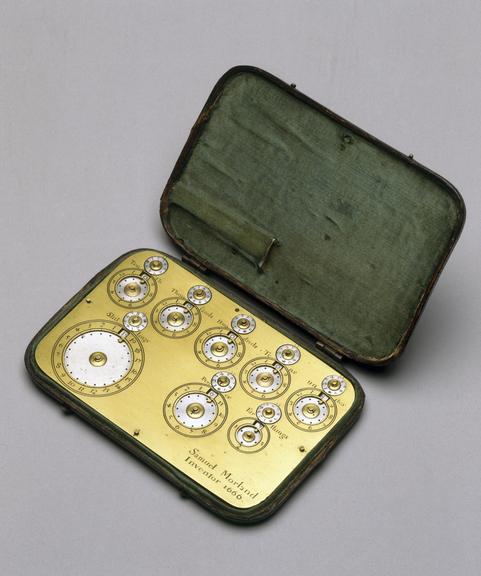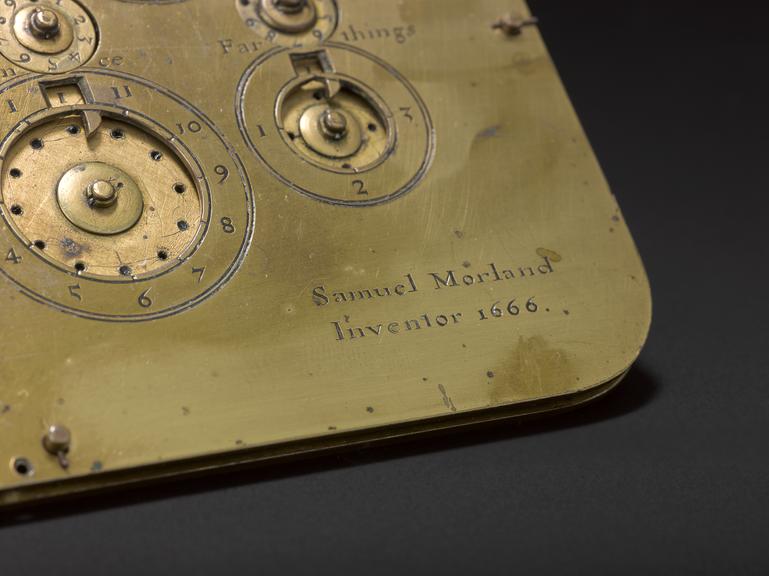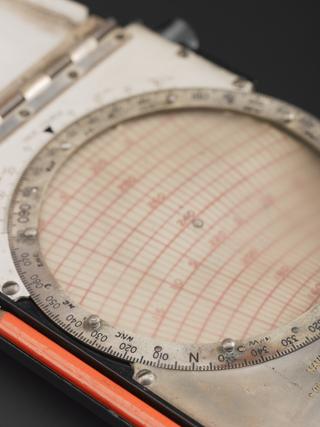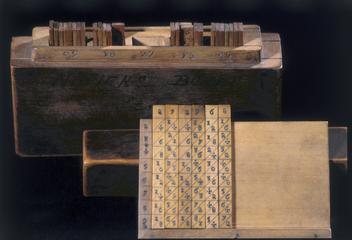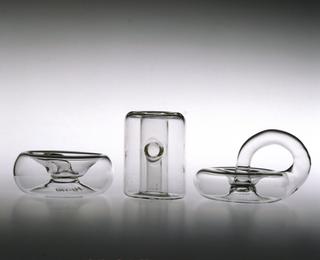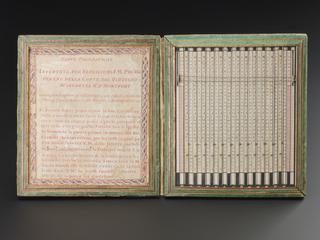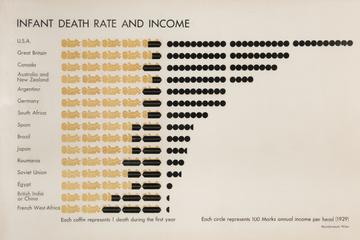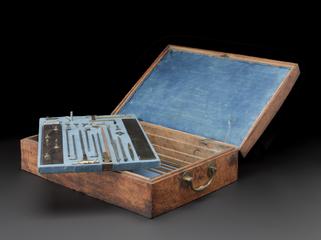Samuel Morland's calculating machine
Calculating machine designed by Sir Samuel Morland in 1666 with leather case, made between 1666-1695.. Inscribed: 'Samuel Morland Inventor 1666'. Probably made by Humphrey Adamson in Holborn, London, but not signed.
More
Sir Samuel Morland (1625-1695) was the first English maker to venture into the field of calculating machines. This is a stylus driven adding machine of the type invented by Blaise Pascal which was used to add and subtract British currency.
- Measurements:
-
Overall: 50 mm x 126 mm x 5 mm, 0.215 kg
- Materials:
- brass (copper, zinc alloy)
- Object Number:
- 1876-538 Pt1
- type:
- calculating machine
- Image ©
- The Board of Trustees of the Science Museum, London





